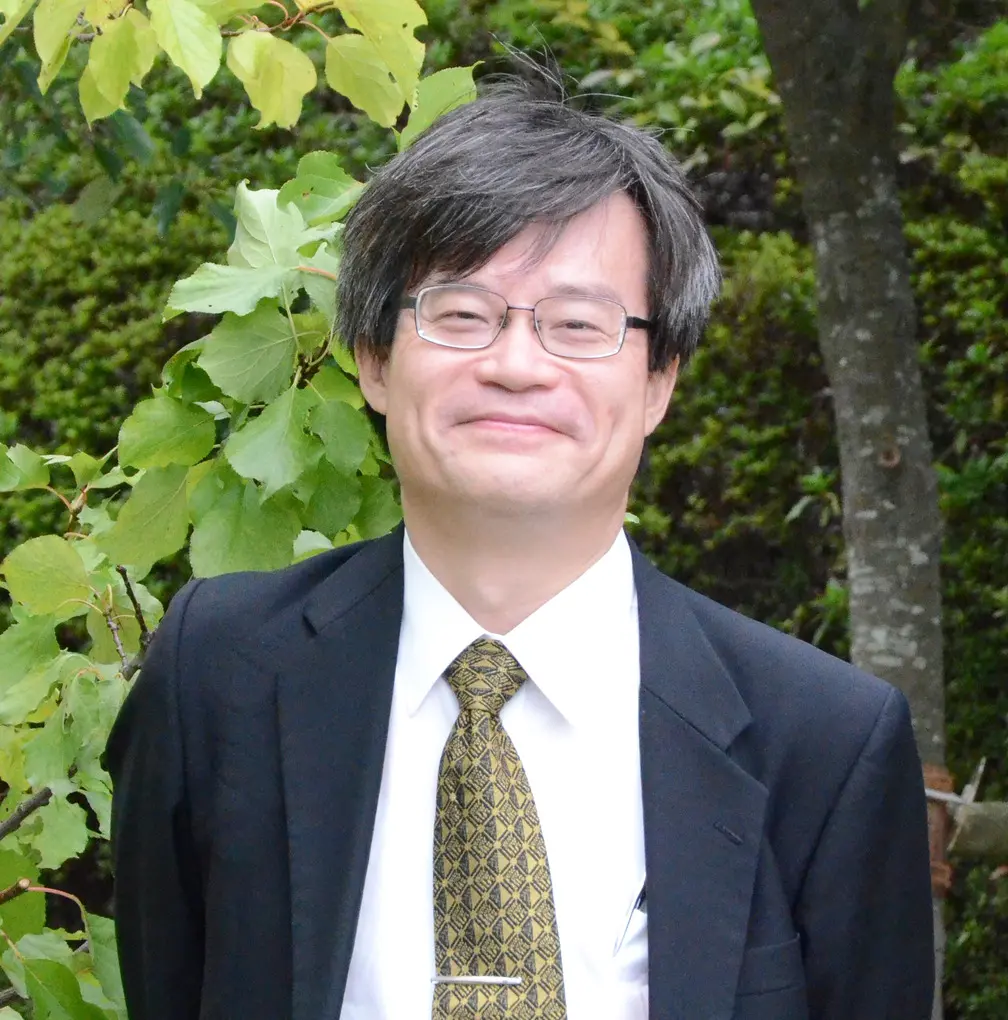|
1960 |
Born in the city of Hamamatsu, Shizuoka Prefecture |
|
1979 |
Graduated from Shizuoka Prefectural Hamamatsu Nishi Senior School |
|
1983 |
Graduated from the School of Engineering, Nagoya University |
|
1985 |
Completed Master’s Course of the Graduate School of Engineering, Nagoya University |
|
1988 |
Completed All But Dissertation (ABD) for a PhD degree of the Graduate School of Engineering, Nagoya University |
|
1988 |
Research Associate, School of Engineering, Nagoya University |
|
1989 |
Acquired the Doctor of Engineering, Nagoya University |
|
1992 |
Assistant Professor, Faculty of Science and Technology, Meijo University |
|
1998 |
Associate Professor, Faculty of Science and Technology, Meijo University |
|
2002 |
Professor, Faculty of Science and Technology, Meijo University |
|
2010 |
Professor, Graduate School of Engineering, Nagoya University |
Starting Point for Blue Luminescent Devices

Regardless of the various efforts of researchers on nitride semiconductors throughout the world, the following seemingly impossible feats were required to achieve high-performance blue luminescent devices: 1. Creation of a single high-quality crystal, 2. Control of electrical conduction (p-type or n-type), and 3. Creation of a high-quality quantum nanostructure (based on 1 and 2 above).
Professor Akasaki thought to somehow overcome these problems, bring out the excellent “ultimate” potential abilities of this material, and open a new field of blue luminescent devices. In 1967, residual rays (known as Reststrahlen in German) of aluminum nitride (AlN) were identified. In 1973, Professor Akasaki embarked upon the previously unexplored challenge of using nitride semiconductors to create a p-n junction-type high-performance blue luminescent device.
However, the issues were even more difficult than predicted, resulting in many challenges and setbacks. In the last half of the 1970s, many researchers abandoned the “unexplored semiconductor” research. Feeling like he was “walking alone in a wasteland”, Professor Akasaki worked on gallium nitride (GaN) crystal growth day and night. One day, he saw a tiny crystal under his fluorescent microscope that gave off cobalt blue light, and became convinced of the major possibilities of GaN.
Then he decided to go back to the starting point of this research, “heteroepitaxy and mismatched crystal growth in extremely large systems”.
Breakthrough in Nitride Semiconductor Crystal Growth
The quality (characteristics) of the epitaxial layer that is stacked in units of atoms (molecules) is heavily dependent on the crystal growth method and conditions, so the growth method chosen may determine the success or failure of the research. After many failed experiences, Professor Akasaki decided to use the Metal Organic Vapor Phase Epitaxy (MOVPE) method (also called OrganoMetallic Vapor-Phase Epitaxy or OMVPE), which had almost no history of use until that point (1979). Today, all p-type crystals and blue luminescent devices are made using this method, so it is clear that this was an extremely important decision. After that, Professor Akasaki returned to Nagoya University, where he was invited (1981); with the cooperation of students, he started with a hand-worked MOVPE device, but initially could not see any significant results. One day he remembered the “buffer layer technology” developed during his Matsushita days for the heteroepitaxy of gallium indium arsenide phosphide (GaInAsP) red lasers, which have different systems and methods. With the strong efforts of graduate student Amano and others, he identified the optimal conditions in 1985, and succeeded in growing a crack-free, pit-free, colorless, transparent, mirror-surface GaN crystal. This is how single crystals for high-quality nitride semiconductors were created. It was then possible for gallium nitride to be used for wide-gap semiconductors for the first time.
Discovery of Nitride Semiconductor p Conduction and p-n Junction Blue Luminescent Device
Following this, Professor Akasaki and his research team doped the high-quality crystal with magnesium instead of zinc, which had been used previously, and used electrical wire to activate it, which led them to discover p conduction in nitride semiconductors (1989). At the same time, they achieved a gallium nitride p-n junction-type high-performance blue luminescent diode for the first time in the world.
By doping the same high-quality crystal with silicon, controlling the n-type conductivity rate became possible (1989). In 1990, induced ultraviolet light emission (coherent light) was achieved for the first time at room temperature using this high-quality crystal, and all the basic technology required for p-n junction-type blue/ultraviolet luminescent devices (LED, LD) was developed.
Achieving a High-Quality Nanostructure in Nitride Semiconductors and Verifying the Quantum Effects
In 1995, high-quality quantum well diodes were used in successful current-injection induced emissions, and the first blue-violet LD was achieved, although it had a short life. With regard to the quantum effects of nitrides, in 1991 the quantum size effect was verified for the first time in the world and, in 1997, the quantum-confined Stark effect was verified for the first time. These breakthroughs gave courage to researchers throughout the world, swiftly accelerating research and development in the field, and brought about rapid developments in nitride semiconductor material science and the industrialization of blue luminescent devices. Then, in 2000, success was achieved in controlling the polarization effect in nitride semiconductors. Based on those results, even higher-performance light emitter research is currently being done throughout the world, using crystals with a small polarization effect.
